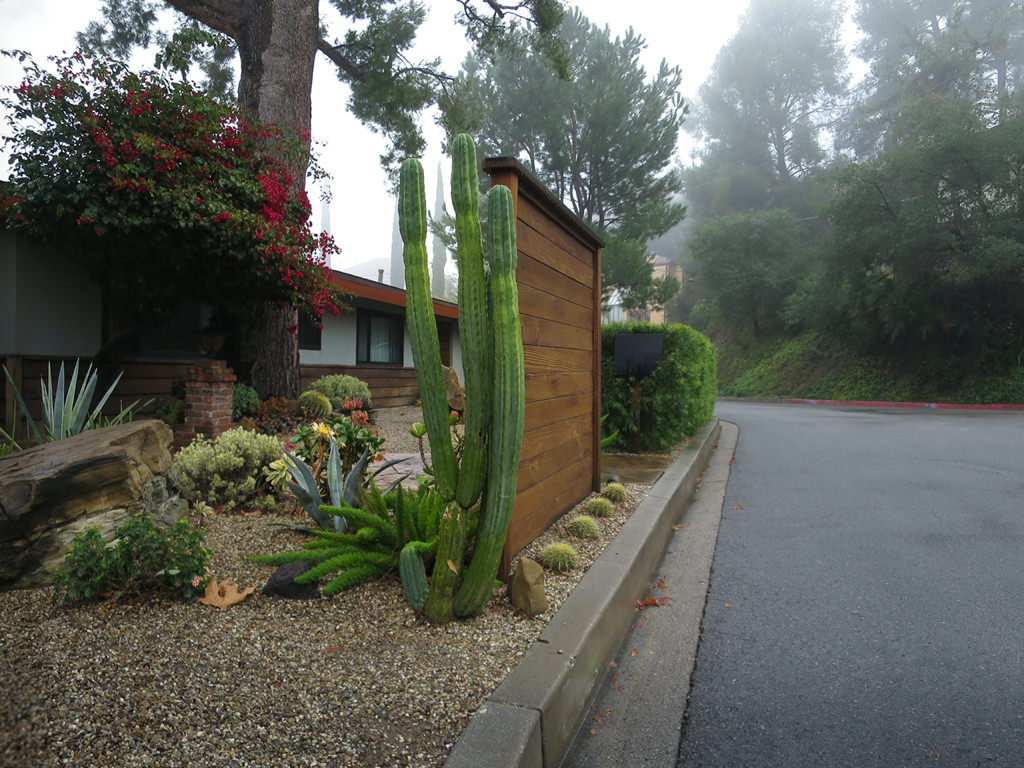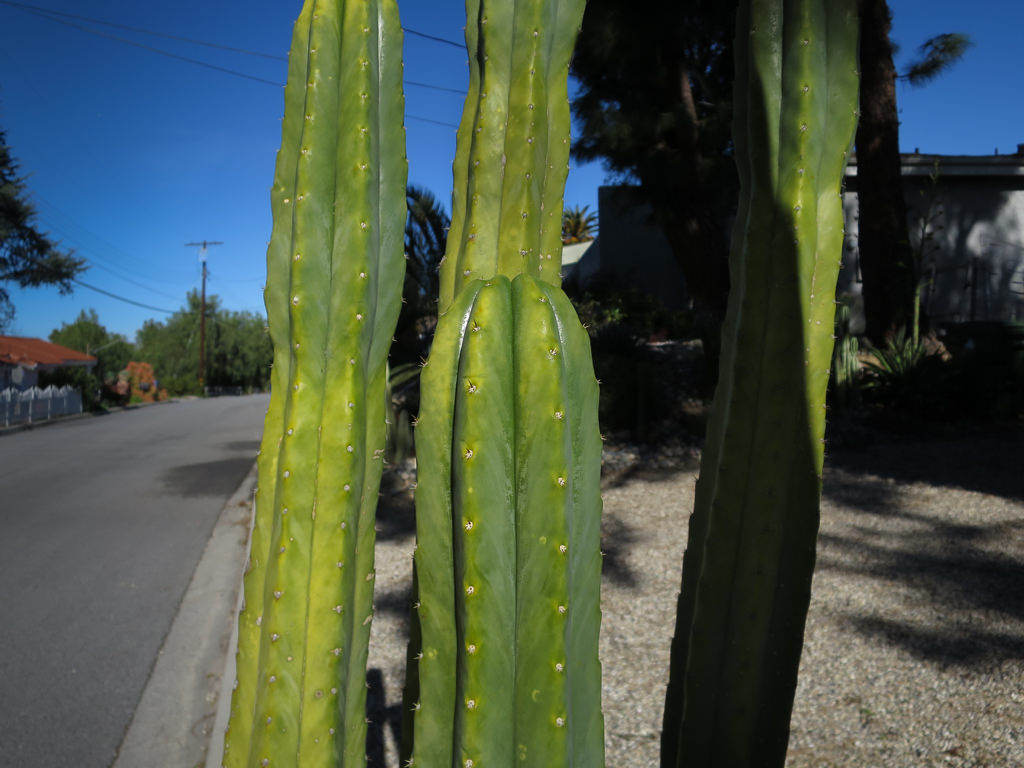Echinopsis pachanoi
(Trichocereus pachanoi)
San Pedro Cactus, Achuma, Huachuma, Aguacolla, Cactus of the Four Winds

Native to Peru and Ecuador, E. pachanoi is a large high-altitude cactus of the South American Andes Mountains. This succulent grows vertically to reach 20 feet high, and its new branches, extending up to eight inches in diameter, emerge from the base. With its growth rate of 20 inches per year, E. pachanoi is formerly designated one of the fastest-growing cacti in the world.
In summer, the cactus is bedecked with enormously fragrant, white flowers that form at the top of the stems. The about eight-inch wide blossoms open only at night and wither after two or three days. When pollinated, the plant produces a small magenta-colored fruit.
E. pachanoi has been revered by the Central Andean Civilizations for centuries. The ancient shamans likely exploited the plant’s psychedelic substance in their religious ceremonies, while ordinary native Peruvians benefited daily from the plant’s antibiotic and anti-fungal properties. Even in the present times, many people slice E. pachanoi stems to treat dandruff or skin injuries and grind the pulp into anti-fungal cream to cure mycosis.
A few stories envelop the name San Pedro Cactus. According to some, the cactus’ name stems from its hallucinogenic properties, which enable users to reach the gates of heaven while still on Earth, similar to St. Peter holding the keys to heaven. In my story, the cactus is dubbed after Pedro de Cieza de León, a Spanish chronicler, who in 1548 embarked on a nearly two-decade-long journey to document Peruvian territory, its culture, flora, and fauna. Undoubtedly, while collecting particulars about local customs, Pedro learned about the usage of E. Pachanoi and likely shared this knowledge with his Spanish companions. For the next many years, cheerful singing and laughter resonated through the Andes Mountains as the exhilarated Spaniards sampled mescaline potion while pondering how to suppress its use. Pedro de Cieza de León became the go-to person for any specifics of the local culture and was later designated as the first European to describe some native Peruvian animal species and vegetables.
In the United States, it is legal to cultivate San Pedro cactus for gardening and ornamental purposes but not for consumption. E. pachanoi is an undemanding, drought-resistant succulent that makes a beautiful decorative accent in a variety of garden landscapes. The best location for this global interdisciplinary cactus is in full to part sun and well-drained soil.
Quick facts
Height: 10 to 20 feet
Width: 5 to 6 feet
Spacing: 5 to 6 feet
Soil: loam, sand, well-drained
pH: acid, alkaline, neutral
Exposure: full sun
Water: low
Tolerance: drought tolerant, xeriscapic
Toxicity: not found



References
Cactus Culture. (n.d.). How To Identify San Pedro Cactus. https://cactusculture.com.au/learning-centre/how-to-identify-san-pedro-cactus
Cactus Jungle. (n.d.). Echinopsis Pachanoi. https://cactusjungle.com/plants/echinopsis-pachanoi-san-pedro/
Gardenia. (n.d.). Trichocereus pachanoi (San Pedro Cactus). https://www.gardenia.net/plant/trichocereus-pachanoi
raulman554. (n.d.). How To Identify San Pedro Cactus: Echinopsis Pachanoi. SanPedroUSA. https://sanpedrousa.net/how-to-identify-san-pedro-cactus-echinopsis-pachanoi/
Seculanu, N. (2023, February 8). San Pedro Cactus Guide: How to Grow & Care for “Echinopsis Pachanoi”. Garden Beast. https://gardenbeast.com/san-pedro-cactus-guide/
Valdez, N. (2023, March 10). Exploring the spiritual and medicinal uses of the San Pedro cactus. Necps. https://www.necps.org/exploring-the-spiritual-and-medicinal-uses-of-the-san-pedro-cactus/
Wikipedia. (n.d.). Pedro Cieza de Léon. https://en.wikipedia.org/wiki/Pedro_Cieza_de_León
Wikipedia. (n.d.). Trichocereus macrogonus var. pachanoi. https://en.wikipedia.org/wiki/Trichocereus_macrogonus_var._pachanoi